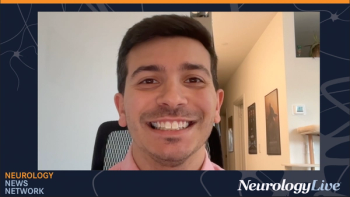
Long-Term Data Suggest Friedreich Ataxia Agent Omaveloxolone Slows Disease Progression Over 4 Years
Key Takeaways
- Omaveloxolone treatment in FA patients resulted in slower disease progression, with improved mFARS and FA-ADL scores over four years compared to natural history studies.
- The MOXIe open-label extension confirmed omaveloxolone's long-term efficacy, safety, and tolerability in FA patients, with no worsening in bulbar function and upper limb coordination.
In the MOXIe open-label extension study presented at MDS 2025, omaveloxolone treatment was associated with no significant disease progression in bulbar function or upper limb coordination.
New late breaking data presented at the
Among 149 patients in analysis (omaveloxolone, n = 43; placebo, n = 106), those treated with omaveloxolone demonstrated a mean change from baseline in modified Friedreich Ataxia Rating Scale (mFARS) scores of 4.40 (SD, 6.26; difference, +1.1 points/year) and FA Activities of Daily Living (FA-ADL) scores of 2.79 (SD, 3.04; difference, +0.7 points/year) over 4 years. Presented by lead author Theresa Zesiewicz, MD, director of the Ataxia Research Center at University of South Florida, a comparison of natural history studies reported FA progression of approximately +1.8 to +2.0 mFARS points per year.
In this analysis of the MOXIe open-label extension, with a data cutoff of February 27, 2025, researchers assessed the long-term efficacy, safety, and tolerability of omaveloxolone in patients with FA treated beginning from extension baseline to 216 weeks. The study evaluated the mean change in mFARS and FA-ADL scores among patients who were treatment naive upon entry into the open-label extension, which include all patients from Part 1 and placebo-treated patients from Part 2 of MOXIe, those who received omaveloxolone in Part 2 and continued treatment in the open-label extension, and the pooled population.
Consistent with earlier treatment initiation, patients in the omaveloxolone group had lower baseline mean mFARS scores of 41.2 (SD, 12.0) versus 43.3 (SD, 12.7), and FA-ADL scores of 12.0 (SD, 5.16) versus 12.7 (SD, 4.92) compared in the placebo group, respectively. Notably, continued treatment with omaveloxolone was associated with no worsening from baseline on 2 mFARS subscales, bulbar function (mean change, –0.21; SD, 0.52) and upper limb coordination (mean change, –1.04; SD, 2.93). The open-label extension study observed that safety findings were consistent with previous results of omaveloxolone.
Omaveloxolone
In June 2025, Biogen announced that it has initiated a
REFERENCES
1. Zesiewicz T, Lynch DR, Delatycki MB, et al. Long-Term Efficacy and Safety of Omaveloxolone in Patients With Friedreich Ataxia: 4-Year Data From the Ongoing MOXIe Open-Label Extension. Presented at: 2025 MDS Congress; October 5-9; Honolulu, Hawaii. LBA-3.
2. Reata Pharmaceuticals Announces FDA Approval of SKYCLARYS™ (Omavaloxolone), the First and Only Drug Indicated for Patients with Friedreich’s Ataxia. Reata Pharmaceuticals. News release. February 28, 2023. Accessed October 3, 2025. https://www.reatapharma.com/investors/news/news-details/2023/Reata-Pharmaceuticals-Announces-FDA-Approval-of-SKYCLARYS-Omavaloxolone-the-First-and-Only-Drug-Indicated-for-Patients-with-Friedreichs-Ataxia/default.aspx
3. Biogen Initiates Phase 3 Pediatric Study of Omaveloxolone for the Treatment of Friedreich Ataxia. News release. June 18, 2025. Accessed October 3, 2025. https://investors.biogen.com/news-releases/news-release-details/biogen-initiates-phase-3-pediatric-study-omaveloxolone-treatment
Newsletter
Keep your finger on the pulse of neurology—subscribe to NeurologyLive for expert interviews, new data, and breakthrough treatment updates.



































